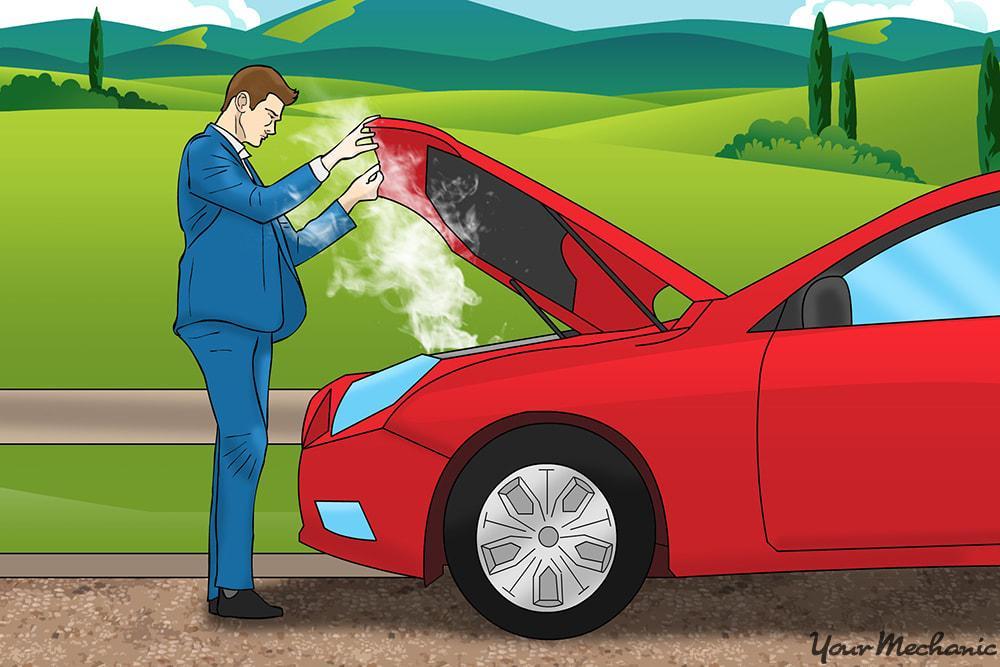This article contains affiliate links. Using any of the links on this page will allow me to earn a small commission at no additional cost to you. What should you do if your automobile begins to overheat while you’re driving? And how far can you go in an overheated vehicle before something breaks?? Despite the fact that overheating can lead to expensive repairs, it is one of the most frequently overlooked issues. In the event of an overheating vehicle, the first thing to do is pull over to a safe location and do a short examination to find out what’s wrong. Overheating can cause serious damage to a car’s engine if ignored, which may necessitate a complete engine overhaul. In other words, for how long until an automobile suffers irreparable harm from being too hot?
Let’s find out as soon as possible!
You Are Watching: How Far Can You Drive An Overheating Car Updated 04/2024
How Far Can You Drive An Overheating Car?
An overheating car doesn’t require a set amount of kilometers before something can be damaged. When a car begins to overheat, it is subjected to extremely high temperatures, which can destroy a wide range of components in the engine room if they are not addressed as quickly as possible. Even if a car overheats, the engine will still run fine for up to 20 miles. As a comparison, a vehicle may only be able to travel a few kilometers before it self-destructs. This is to demonstrate that an overheating engine will not be able to travel any distance before suffering serious and maybe deadly damage.
Read More : Best Swirl Remover For Black Cars Updated 04/2024
You may not be able to pull over to check on your overheating engine if you’re on the highway, but you may try this trick to see if it helps the car cool down. Turn on the heating instead of the air conditioner if it was on. Activate the driving assistance features (if your car supports the tech). A malfunctioning air conditioning system is one of the most common causes of overheating. Because of this, turning off the AC would lower the engine’s workload. Your car’s heater will pull heat from the engine compartment and distribute it to the driver and passenger areas. Reduce the temperature in that area to avoid overheating. However, if you can, pull over and wait a few minutes for the car to cool down (typically 20 to 30 minutes) before investigating what caused the temperature to climb.

What Damages Can Be Caused By Overheating?
In addition to coolant leaks and valve/pump damage, overheating can lead to engine failure. Overheating can, unfortunately, cause additional harm that we haven’t addressed here. To avoid overheating, you merely need to avoid and rectify any defective components in your engine bay.
How To Detect An Overheating Engine
Read More : Signs You Need To Change Your Fuel Filter Updated 04/2024
That’s an indication that your engine bay is overheating if the temperature gauge jumps from normal to high (red). The bonnet may occasionally emit steam (smoke).
How To Prevent Your Car From Overheating?
If you want to avoid overheating, these aren’t the best ways to do it. Every morning, spray the car down with a hose and check for leaks. Make sure the coolant reservoir is full. Inspect to see if the radiator fan is working properly. Make sure the water pump and thermostat valve are in working order before proceeding. Always have your car serviced by a competent mechanic.
Conclusion | How Long Can a Car Overheat Before Damage
So, how far can you go in a hot automobile before it breaks down? How long an overheated car can drive before causing death is unimportant. It’s better to be concerned about the probable harm to your car that could result from allowing the overheating to continue for too long. If you keep driving an overheated automobile, you’re putting yourself and your vehicle at danger of significant engine damage. We’ve compiled a list of helpful hints for avoiding the problem of overheating. However, we still recommend that you take your car to a mechanic on a regular basis to have it maintained by experts.

Sources: https://micdot.com
Category: Car










